In the world of barbecue, mastering the art of smoking a brisket is a badge of honor. The debate on the optimal time to wrap a smoked brisket has as many opinions as there are pitmasters.
We know that wrapping a brisket is a traditional technique employed to lock in moisture, accelerate cooking, and manage the formation of the outer bark.
We can agree that brisket wrapping is often done when the meat reaches the so-called "stall" phase, a point where the internal temperature plateaus.
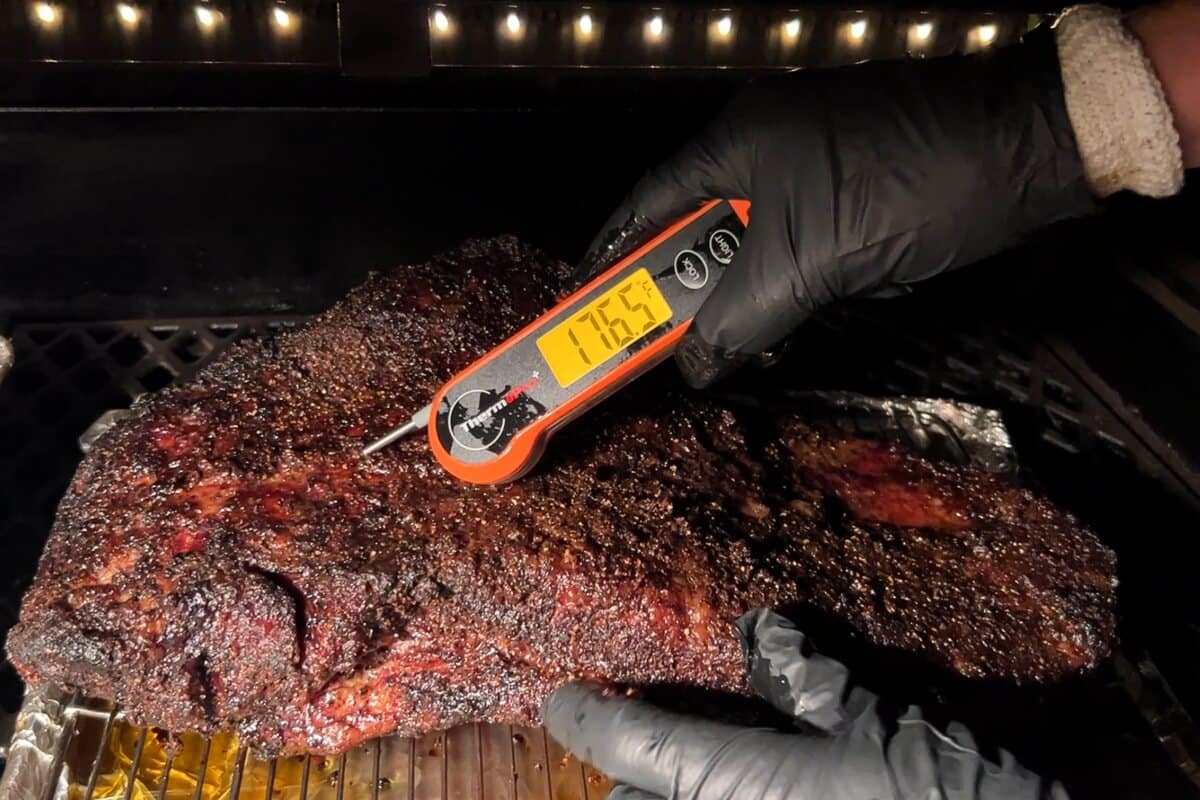
Typically, this occurs when the internal meat temperature is between 165-170°F, a critical period where wrapping the meat in foil or butcher paper can make all the difference.
Understanding the science of meat smoking and staying informed about various techniques ensures we can make educated decisions in our smoking process.
Whether we opt for foil for a faster cook or butcher paper for better smoke flavor, the choice ultimately hinges on our personal preference and the specific outcomes we desire for our brisket.
Jump to:
Understanding Brisket and the Wrapping Process
Wrapping a brisket during smoking is a critical technique that influences both the cooking process and the end result of the brisket. It's a strategic decision made to bypass the stall and modify the meat's texture and flavor profile.
Depending on the choice between aluminum foil and butcher paper, pitmasters can retain more moisture for a juicier brisket or aim for a firmer bark with a deeper smoke flavor.
Significance of the Stall in Brisket Cooking
The phenomenon known as the stall occurs when the internal temperature of the brisket ceases to rise, often hovering around 150°F to 170°F.
This temperature plateau is caused by evaporative cooling, which can significantly extend cooking time.
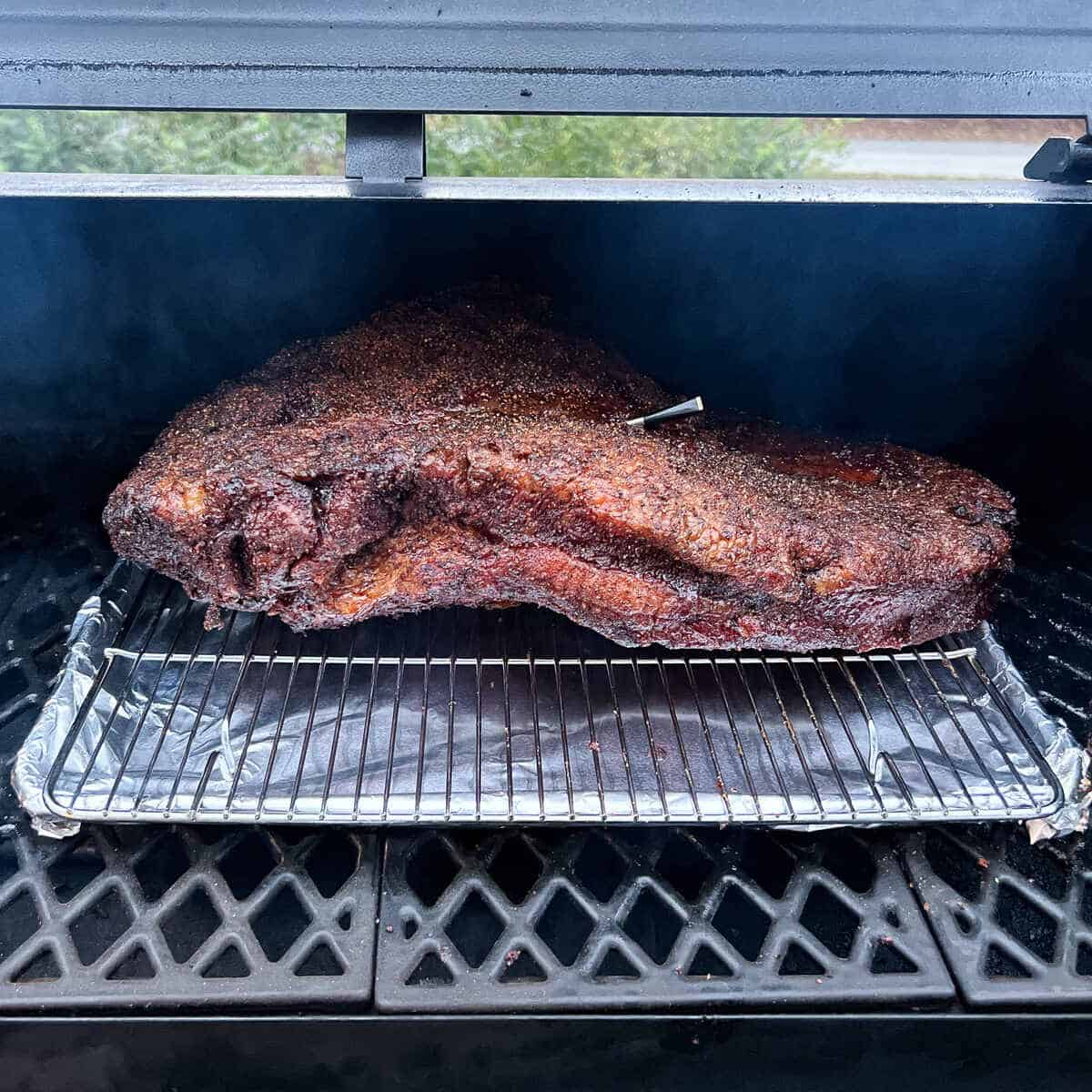
We recognize this as a critical point in the smoking process, where many of us opt for the Texas Crutch method—a method of wrapping brisket in aluminum foil—to encapsulate the heat and push through this phase.
The steam generated within the foil speeds up cooking and helps maintain the moisture content, ensuring that we achieve a tender, juicy brisket without drying it out.
Different Wrapping Materials and Their Properties
When it's time to wrap our brisket, we must choose between aluminum foil and butcher paper.
Aluminum foil is non-porous and perfect for creating a steamy cooking environment. It is heat-resistant and has reflective properties that work to our advantage in controlling cooking time. With foil, we aim to lock in the meat's natural juices, creating a moist, indulgent texture within. However, a drawback is that the bark may not develop as crisp due to the high level of moisture retention.
Butcher paper—often referred to as pink butcher paper—is a porous option that allows the brisket to breathe and maintain a balance between keeping it moist and developing a nice, smoky crust. It's praised for fostering a bark that is enjoyable to bite into without sacrificing the meat's moisture significantly. The breathability contributes to the enhancement of the smoke flavor as well, leading to a brisket that's delightfully smoky and satisfying in texture.
Some people have been known to use alternative wrapping materials such as parchment paper, howrever this is less common than using aluminum foil or butcher paper..
Ideal Timing for Wrapping Brisket
Brisket wrapping is a crucial step in the smoking process, primarily to ensure juiciness and prevent moisture loss.
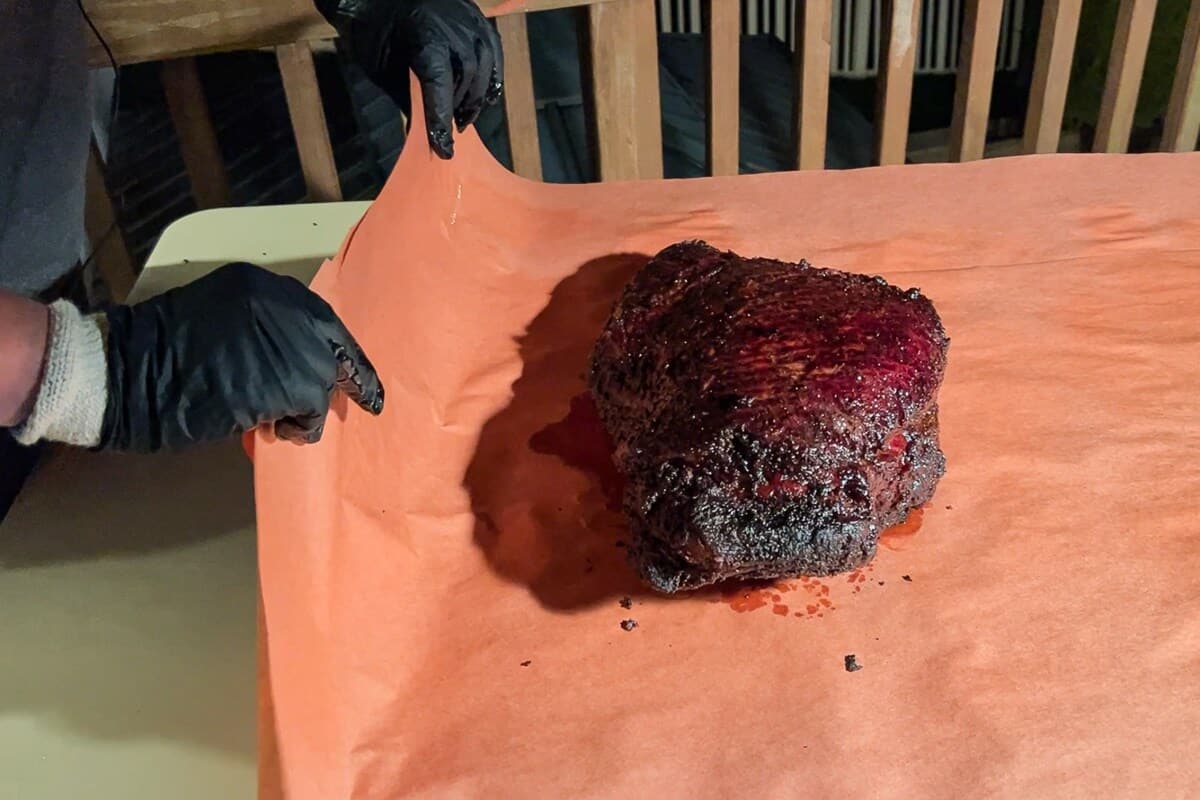
We wrap the brisket when it reaches the appropriate internal temperature and the bark has developed a rich color, showcasing that it is time for the brisket to be enveloped and allowed to finish cooking.
Measuring the Internal Temperature
We always monitor the internal temperature of our smoked brisket with a probe thermometer, which is an essential tool in judging when to wrap.
Ideally, the brisket should be wrapped when the internal temp hits around 165°F to 175°F.
This range is significant because at these temperatures, evaporative cooling starts to occur, often referred to as "the stall," which can drastically slow cooking progress.
By wrapping the brisket at this stage, we encapsulate the heat and speed up cooking time.
A leave-in probe thermometer or a signals thermometer keeps us constantly updated without having to frequently open the smoker, helping us maintain a stable smoking environment.
Recognizing the Right Texture and Moisture
Before we even look at the thermometer, we inspect the bark.
It should be a deep mahogany color, and when pressed, the bark on the fat cap side should give like soft butter and no longer bounce back like rubber.
This texture indicates that sufficient rendering has occurred and the meat has absorbed optimal smoke.
It's this bark formation that tells us the brisket is ready for wrapping, ideally in butcher paper or aluminum foil, to preserve that perfect juiciness.
How to Properly Wrap a Brisket
After meticulously selecting and preparing your brisket, the wrap is a pivotal step in ensuring a mouthwatering result.
Step-by-Step Wrapping Techniques
To wrap brisket in aluminum foil, lay out a large sheet of heavy-duty aluminum foil, slightly bigger than the size of your brisket.
Place the brisket at the center and fold the foil over it, sealing the edges by folding them together, effectively creating a tight package.
This is commonly known as the 'Texas Crutch' technique, often adopted to push through the brisket's stall phase—a period during cooking when the temperature plateaus.
For those wishing for a crisper bark and to maintain a smoky profile, learning how to wrap brisket in butcher paper is crucial.
Unlike foil, butcher paper is breathable, allowing smoke to continue influencing the brisket's flavor.
Aaron Franklin, a renowned pitmaster, popularized this method. Lay the paper flat, set your brisket in the middle, and wrap it by folding the paper over the brisket, tucking the ends under.
The result should be snug, not overly tight, granting a form of heat insulator that still permits some smoke penetration.
WATCH a brisket being wrapped in butcher paper on our YouTube Channel!
For a unique approach, consider the boat method where the brisket is placed on a sheet of butcher paper or foil and the edges are folded up, leaving the top exposed.
This allows for direct exposure of the bark to continue to smoke and get crusty while the juices are caught in the makeshift boat.
Securing Juiciness and Preventing Overcooking
It's critical to envelop your brisket properly to secure juiciness. Wrapping acts as a barrier to retain internal moisture which is key for juicier meat.
It's ideal to wrap your brisket once it hits an internal temperature of around 165°F, a point at which the moisture begins to evaporate rapidly, potentially leading to dryness.
Additionally, wrapping aids in even heat distribution, thus preventing overcooking certain sections of the brisket.
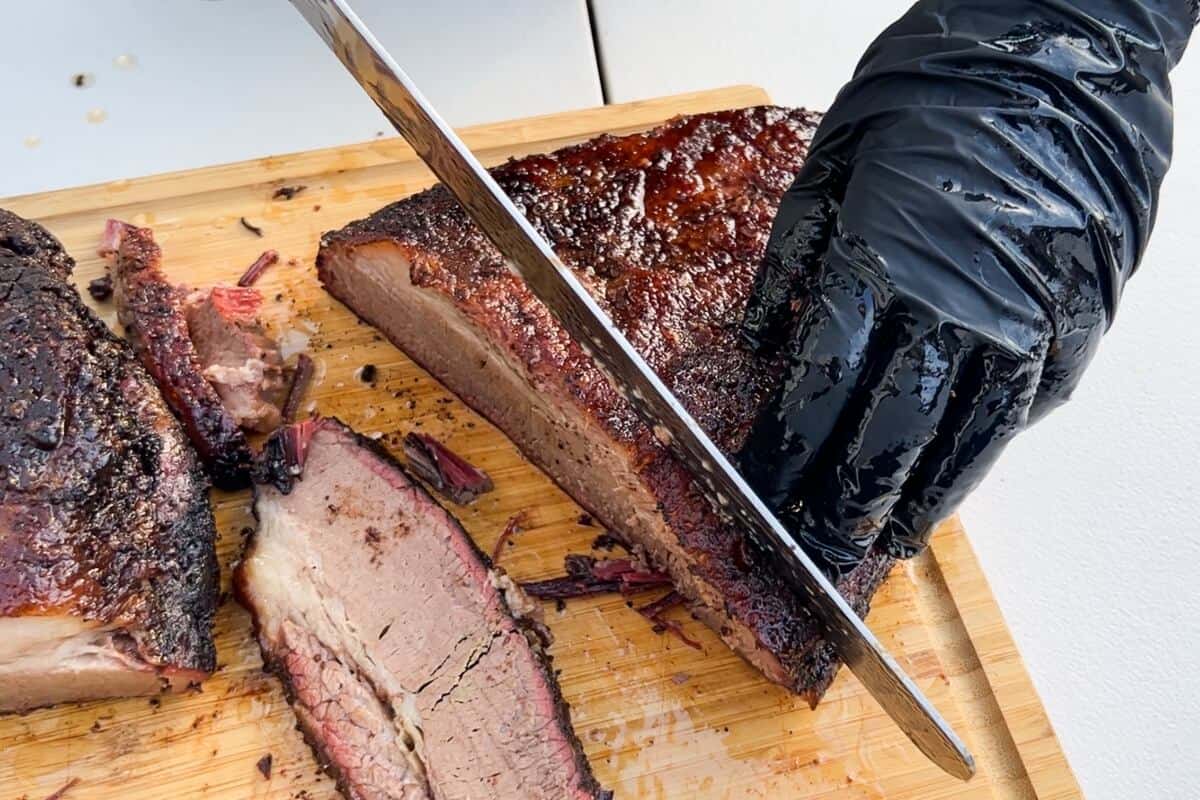
Remember to let the wrapped brisket continue cooking until it reaches the desired tenderness, usually around 195-205°F internally.
It's equally essential not to remove the brisket from its wrap immediately after taking it off the heat.
The resting phase is the unsung hero of tender brisket; let it rest within its wrap for at least an hour, or up to several hours.
This pause allows the fibers to reabsorb the juices, and the residual heat to finish the cooking process, ensuring your labor of love is rewarded with each succulent bite.
Frequently Asked Questions
In this section, we cover some of the most common questions regarding the process of wrapping brisket during smoking.
Should a brisket be wrapped during smoking, and if so, at which stage of the cooking process?
Yes, it's recommended to wrap your brisket when the internal temperature is between 165-170°F. This typically occurs after several hours of smoking, during the stall phase when temperature plateaus.
What are the implications of wrapping a brisket earlier than recommended?
Wrapping a brisket too early can lead to an underdeveloped bark. The wrapping should occur after the brisket has absorbed enough smoke and formed a crust, ensuring the best flavor and texture.
Is it beneficial to increase the smoker's temperature after the brisket is wrapped?
After wrapping, some pitmasters increase the smoker's temperature to shorten cooking time and push through the stall. However, it's crucial to monitor the meat to prevent overcooking.
Can brisket be successfully smoked without wrapping, and what are the pros and cons?
Unwrapped brisket will have a crispier bark but risks drying out over a long cook. While the smoking process may take longer, some prefer this for a more pronounced smoke flavor.
How does the fat orientation affect the outcome when wrapping a brisket?
When wrapping a brisket, always place the fat side towards the heat source. This provides a natural protective layer that helps to keep the meat moist and tender during the smoking process.
What is the proper way to rest a brisket post-smoking for optimal tenderness?
A brisket should be rested properly after smoking—wrapped in foil or butcher paper and placed in a cooler for 1 to 2 hours. Resting allows the juices to redistribute, ensuring the meat is tender and flavorful.

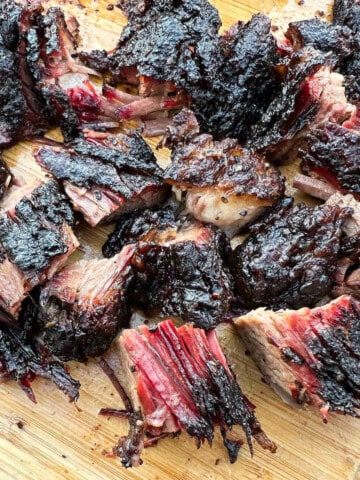
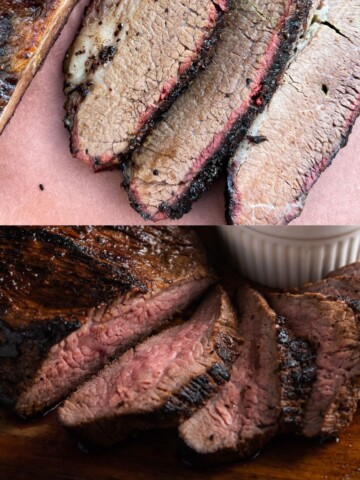
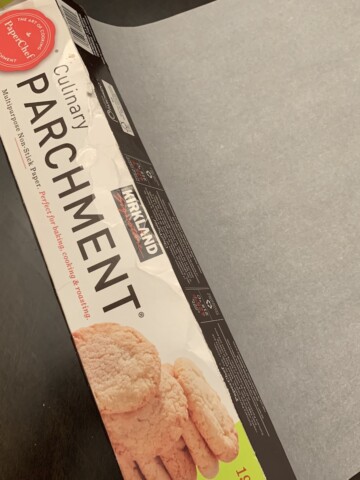

Leave a Reply